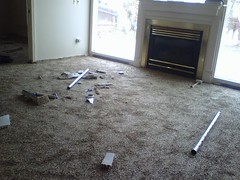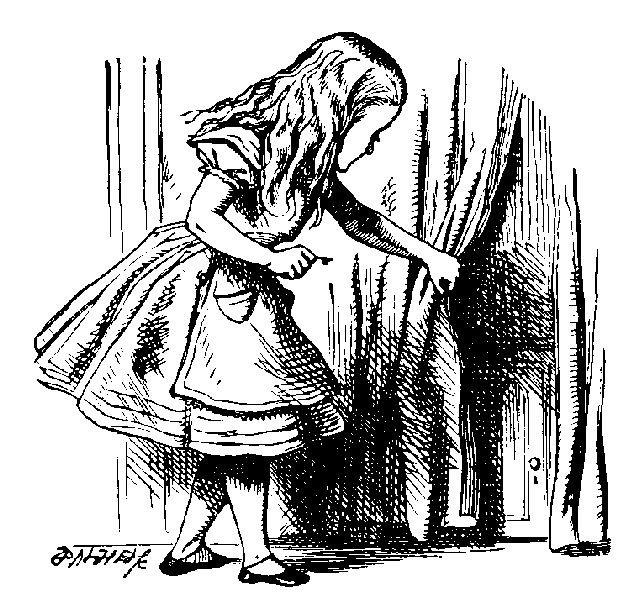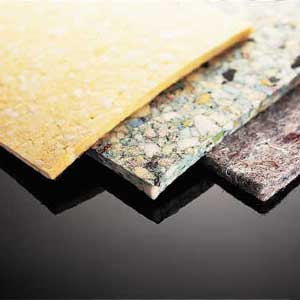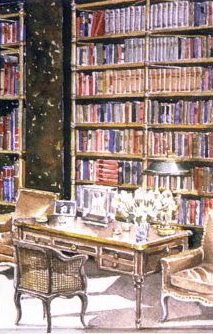
Carpet installation. It's what makes or breaks that magical vision you've been carrying in your mind ever since you began contemplating whether to change your carpet or not.
It's what you physically have no control over unless you're an installer yourself.
It's what you hope your retailer takes very seriously.
It's also what you can't evaluate until after the job is done and the carpet fully installed in your home.
As grim as things might seem,
we have installation tips to increase the likelihood that you will be so delighted with your carpet installation, that not only will you tell everyone you know how happy you are, but you will also quickly decide to replace every other carpet in your home. You know, the ones you've been holding off on!
First, facts:
+ How well your carpet is installed will definitely affect how beautiful your carpet looks and how well it performs in your home. You absolutely want a carpet that is seamed and stretched properly!
+ If installation guidelines aren't followed, one consequence is that your carpet may wrinkle and buckle. If wrinkles and buckles aren't corrected, they can cause your carpet to wear prematurely.
This is but one example of why you should work closely with your retailer to make sure that your installation job is well planned, estimated and coordinated with the installer.
Your retailer will either have installers on staff or installers s/he works with on a contract basis. If your retailer can't provide a qualified installer, you may want to consider another resource...
Ask your retailer if the installer s/he uses is certified by the CFI (Certified Floorcovering Installers), FCIB (Floor Covering Installation Board), WFCA (World Floor Covering Association), or CRI (Carpet & Rug Institute). If the answer is no, I would suggest finding another retailer to work with.
Once you are comfortable with your retailer's installation process, put together a plan that you can review again with the installer before the job begins.
The plan should include the following points in writing:
+ Accurate measurements showing roll direction and seam placement, as well as details in areas requiring special consideration such as stairs and closets. Discuss the least visible placement for seams. Most installations will have at least one seam, and no seam is invisible [i.e., think of a sewn garment seam]. Also, ask about matching patterns if you chose a patterned carpet.
+ Explanations of planned execution where the new carpet will transition to other flooring surfaces such as ceramic, hardwood or other existing carpet.
+ An analysis of the sub-floor surface. Your installer will need to make certain the floor is consistent and level enough to accept new carpet. Even minor unevenness can become apparent once the new carpet is laid. If you are aware of any insect or water damage, consider having that repaired as soon as possible so it doesn't delay the installation of your carpet. This is also the appropriate time to have any squeaks, loose floorboards, etc. repaired.
+ Confirm how the carpet will be stretched: manually or with a power stretcher? The Carpet & Rug Institute [CRI] recommends that carpet be stretched using a power stretcher and not knee kicked especially for carpet installed over a separate cushion. That prevents bubbling and wrinkling later.
+ Insist that the installer follow the carpet manufacturer instructions and/or those detailed in the Standard for Installation of Residential Carpet, CRI 105 [I suggest that you read at least pages 4-11], including that seam edges be sealed with an appropriate adhesive to prevent delamination and edge ravel.
+ Who will move the furniture and where? Specifically discuss unusually large or delicate pieces. You may be responsible for moving certain items, or charged for moving others. Expect the entire room to be cleared, including drapes, wall hangings, breakables and electronics.
+ Who will remove existing carpet? Who will dispose of old carpet and padding? [Note: Carpet America Recovery Effort (CARE), a joint industry-government effort that Solutia is a member of], is working hard to increase the amount of recycling and reuse of post-consumer carpet and reduce the amount of waste carpet going into landfills.]
+ Identify a clear path for the installers to get the carpet roll into the room. Carpet rolls can be between 12 and 15 feet long, so installers will need plenty of room to maneuver.
Other items for you to anticipate - as a consumer - from the Carpet and Rug Institute's Installations Tips and Facts:
+ Before carpet installation, finish any all and all other remodeling projects [e.g., painting and wallpapering]. Vacuum the old carpet to prevent airborne dust and dirt. Then, once the carpet and cushion are removed, vacuum the sub-floor.
+ When the carpet is delivered, check whether the texture, style and color are correct and that you see no visible defects before installation.
+ Be aware that, if you select a thicker carpet than the one you are replacing, your new carpet may prevent doors from opening/closing. Anticipate that you will need to have them trimmed. Your installer may have to remove doors and will rehang them if possible.
+ Be sure to circulate fresh air during installation. Open windows and doors, use an exhaust fan or operate the fan of your heating or air conditioning system. The “new carpet smell” will clear very quickly, usually in less than 72 hours.
+ In the months after installation, you may see shedding or sprouting. This is normal. Here’s what to do:
* Shedding— regular vacuuming.
* Sprouting— [this is a single tuft that extends beyond the carpet’s surface] clip it off. Do not pull it out.
+ You may also notice pile reversal or shading, especially with a plush carpet. Also normal! This is caused by light reflecting in different ways as the pile fibers bend in different directions.
+ If you see wrinkling, or ripples, immediately call your retailer. Your carpet may need to be professionally restretched.
+ If at all possible, try to keep some of the larger pieces of carpet leftover from the installation. You never know when you might need them.
If you have any additional questions, contact your retailer.
The Dabbieri blog in { Tips For Great Carpet Installation } suggests that you verify that your in-home temperature is appropriate for installation. Check page 10 of the Standard for Installation of Residential Carpet, CRI 105 for specifics, as well as with your retailer!
By the way, if you are working with a top-notch retailer, s/he will anticipate your concerns and questions.
And, if you come across any other good tips to include in this guide, please let me know.

PS: Tom Jennings, carpet installation expert and former retailer, was kind enough to review this article for accuracy. Thank you, Tom!
For a retailer's perspective on how important installation is to the overall carpet retail experience, read Tom Jennings: Installation Is Not a Dirty Word from the recent Surfaces 2008 show.
Technorati Tags: carpet installation Tom Jennings installing carpet Del.icio.us Tags: carpet installation Tom Jennings installing carpet
 What memories do you associate with sliding across or down slippery surfaces? Possibly at a carnival or amusement park slide, or on slippery polished floors, or maybe even on an elusive ice patch....
What memories do you associate with sliding across or down slippery surfaces? Possibly at a carnival or amusement park slide, or on slippery polished floors, or maybe even on an elusive ice patch....












































